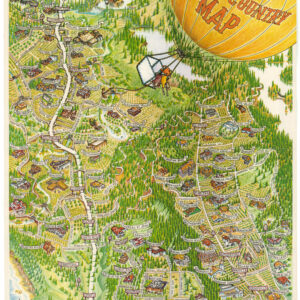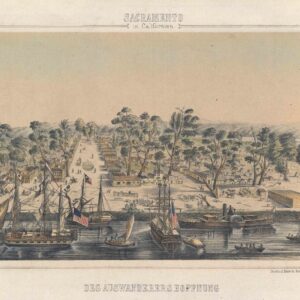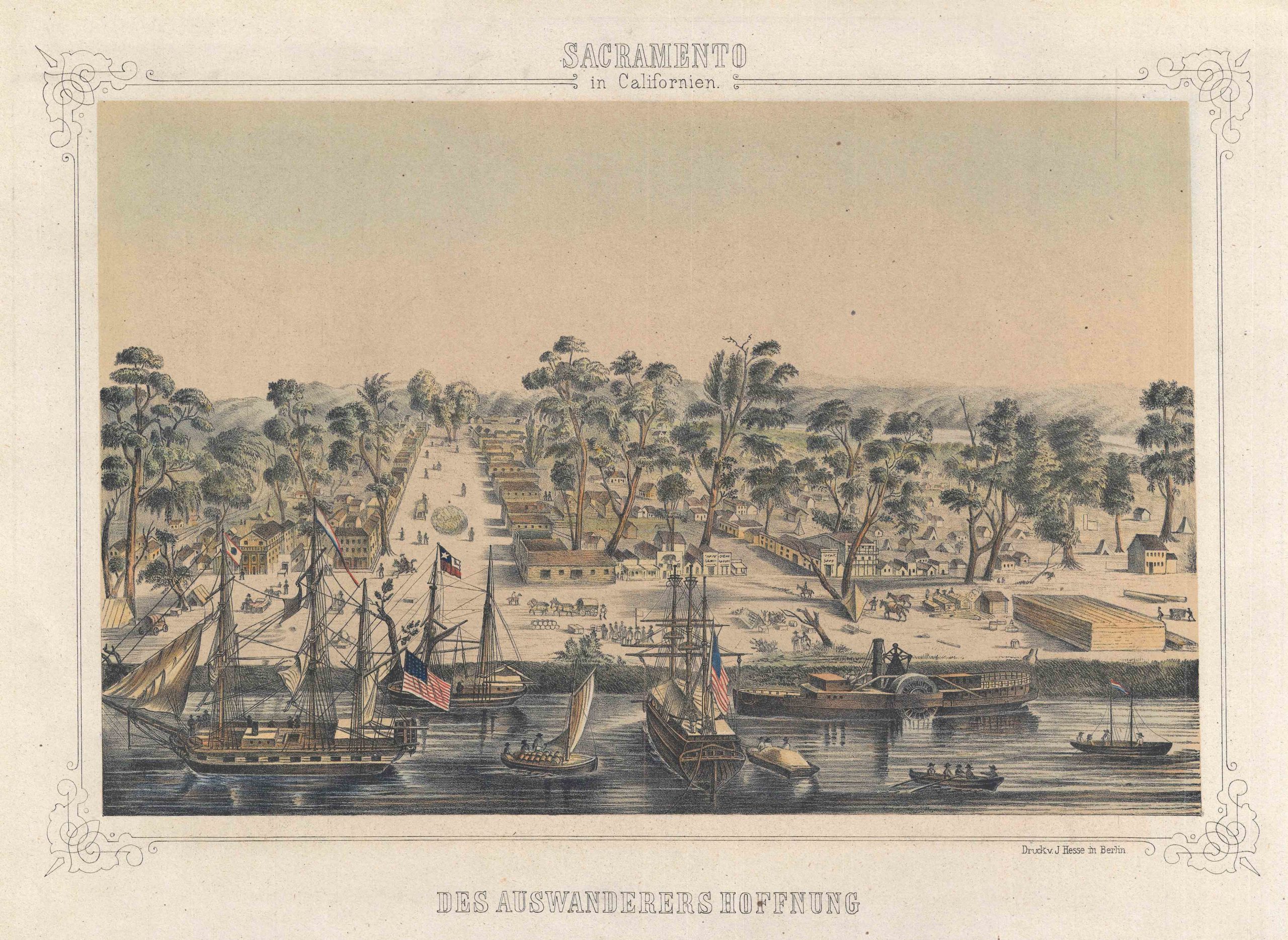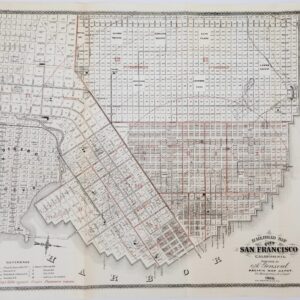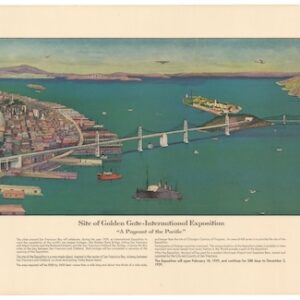Large, detailed sea chart of the West Coast of North America with added notations and sighting information.
Pacific Ocean. Eastern Part. Cape Corrientes, Mexico to Kadiak Island. Compiled from the most recent Surveys in the Hydrographical Office. 1876. London, 21 June 1877
$900
1 in stock
Description
With additions to 1895. This large chart shows virtually all of the Pacific Coast of North America in excellent detail inland as far as Denver. It covers all of Southern Alaska on the eve of the Klondike Gold Rush. Very few settlements of any kind are yet shown in Alaska, and the boundary with Canada is sketchily laid down.
The railroad network for the Western United States in shown in detail. In addition to the Union and Central Pacific, the Northern Pacific appears, as well as a web of lines in the Central Valley of California.
This was a working chart, used on board an unidentified ship. The route of a voyage (June-July 1895) from San Francisco to south of the equator is laid down in pencil and red ink.
Cartographer(s):
The United Kingdom Hydrographic Office is the British Admiralty’s agency for creating and supplying hydrographic and marine geospatial data. The Admiralty’s first Hydrographer was Alexander Dalrymple, who was appointed in 1795 on the order of King George III. Among his tasks was cataloguing the existing charts into a royal cartographic library. Dalrymple was succeeded in 1808 by Captain Thomas Hurd, under whose stewardship the department was given permission to sell their maps to the public. By 1825, more than seven hundred different charts and coastal views were for sale from the Hydrographic Office.
In general, hydrographers have played a key role in the development of cartography. It was hydrographers who first began calculating the effects of magnetic declination on navigation, and hydrographers who drew the first maps that tried to compensate for this effect in their rendition. The British Hydrographic Office introduced a number of important features, such the use of an eponymous scale or the inclusion of tide tables in nautical charts, which soon became standard features. The Hydrographic Office also mounted or co-sponsored along list of expeditions across the globe, including Charles Darwin’s voyage with the HMS Beagle.
Condition Description
Cloth-backed, some soiling, but overall a very good example with manuscript additions.
References
